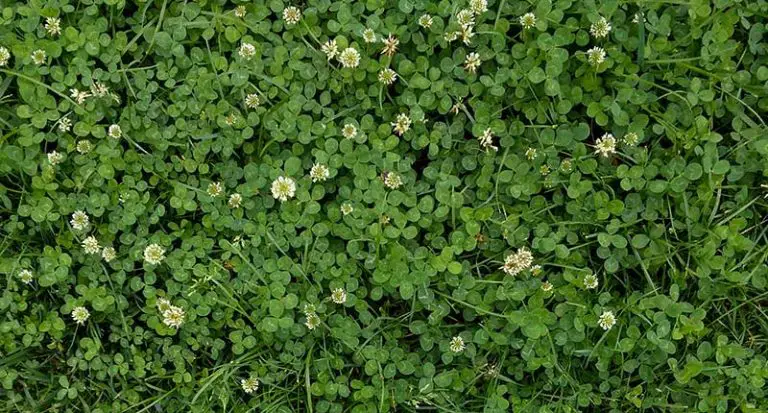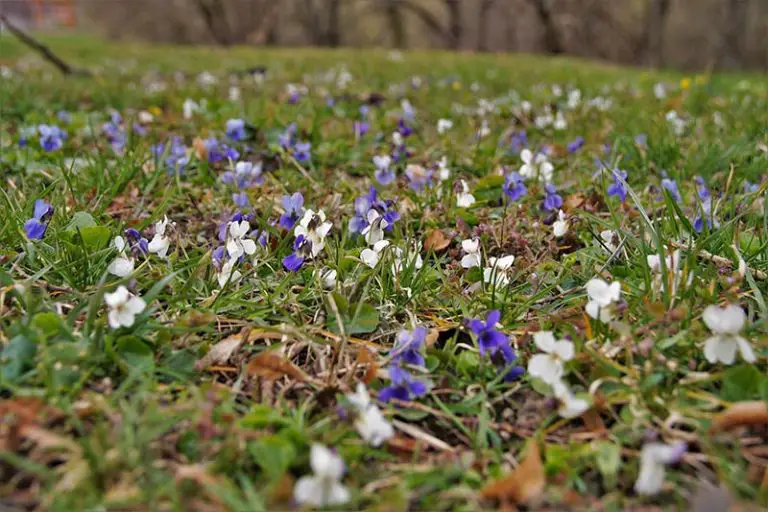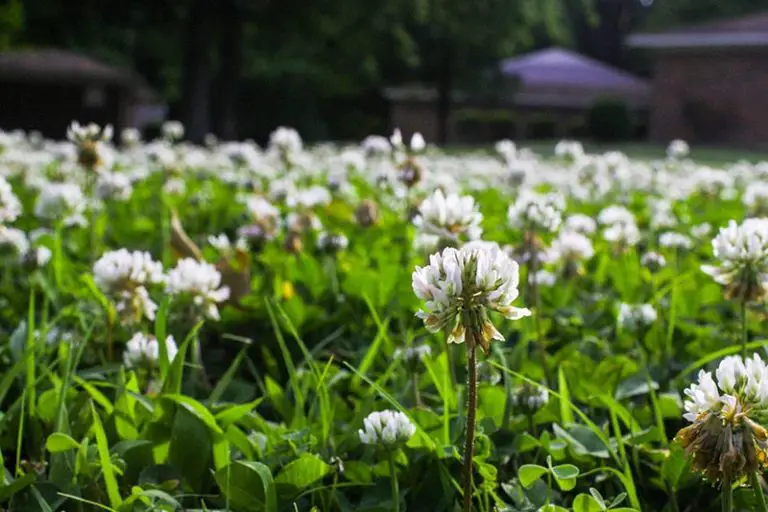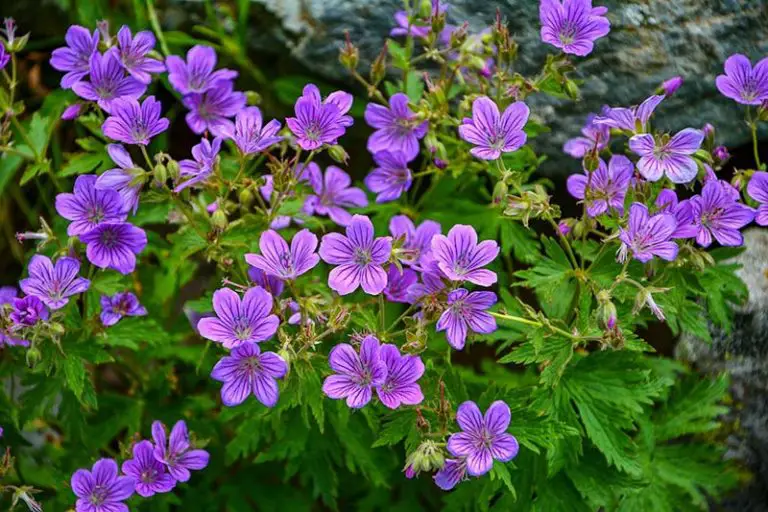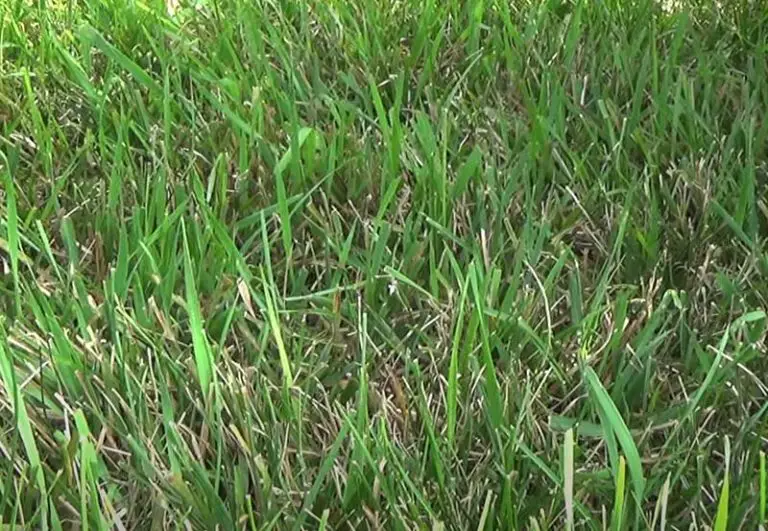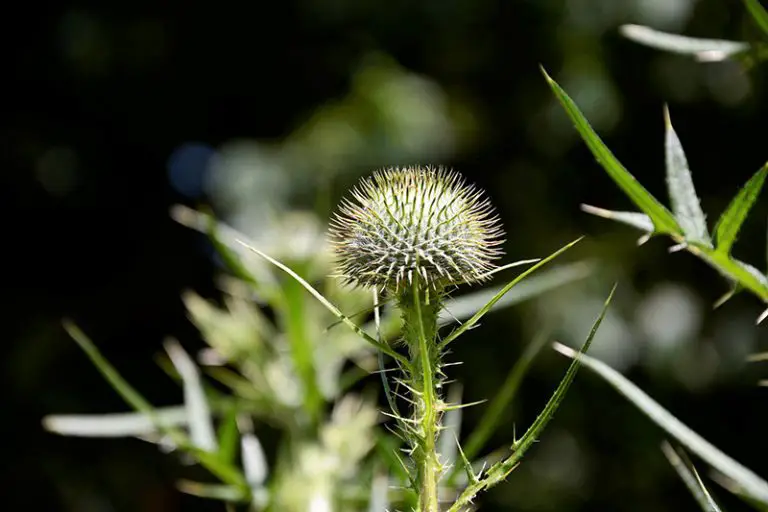How to Get Rid of Dandelions
Dandelions are a source of much debate among botanists and homeowners alike. Despite their historical use in food and medicine, and their cheerful yellow appearance, dandelions are the arch-nemesis of many proud gardeners trying to perfect the aesthetics of their yard.
There are a few methods you can use to get rid of dandelions, including manual removal by hand, using a weed puller, or with the application of a natural or chemical herbicide.
This guide explains how to get rid of dandelions using all of these methods, as well as explaining some of the benefits of keeping a healthy population of dandelions on your lawn.
What Are Dandelions?
Dandelions are broadleaf herbaceous perennials commonly found growing in grasslands and cultivated grounds. They are native to Europe and Asia, however, they grow in countries all over the world; dandelions are a relatively hardy species, and will take root anywhere that they have access to full sun and a temperate climate.
They can withstand high temperatures, low temperatures and frost, and low levels of moisture, and are able to tolerate crowding. This means you can find dandelions in any environment, including in deep woodlands, cultivated fields, rocky hillsides, and in fertile gardens and lawns. They will grow and spread regardless of the condition of the soil, but they are most voracious in rich, healthy soil.
What Do Dandelions Look Like?
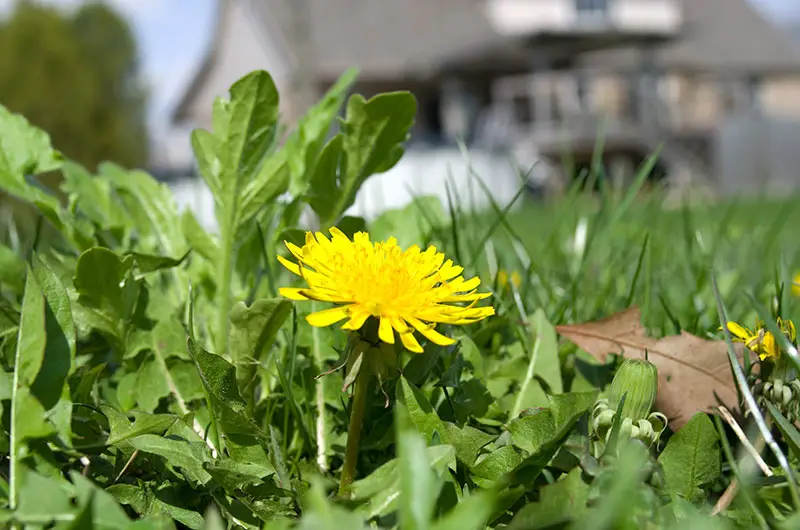
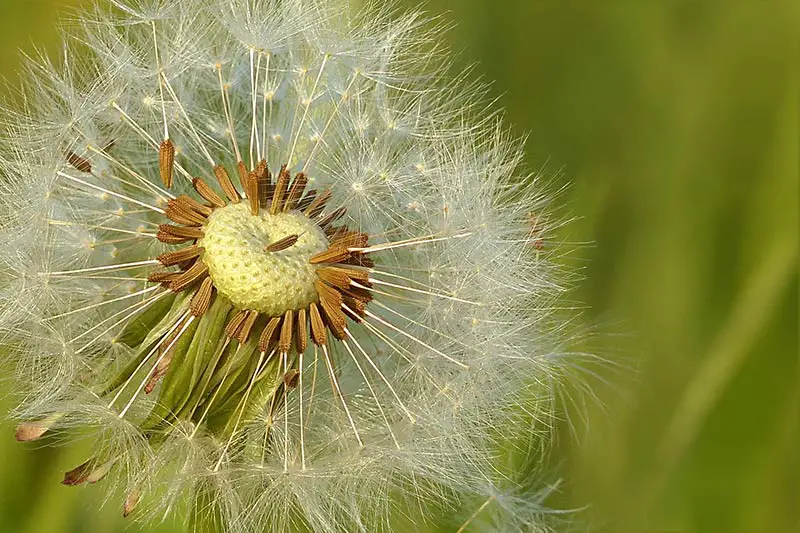
Dandelions have jagged leaves that sit at the base of a stem and produce a bright yellow flower in the early spring. The name dandelion comes from the French phrase “dent de lion”, which translates to “lion’s tooth”. This name is most likely derived from the plant’s distinctive leaves that protrude at the base of the plant. They can grow up to 25 to 30cm in height.
After they have finished flowering, dandelions will produce a globe-shaped collection of seed heads. Each of these seed heads has a pappus, the name for the feather-like fan of soft white hairs that allow the seed head to be picked up and carried by the wind. Each dandelion plant is capable of producing up to 20,000 viable seeds.
Types of Dandelions
Common Dandelion
The common dandelion is the most common and familiar species, identified by its bright yellow flower. It is most often found growing along roadsides, riverbanks, meadows, and on lawns.
Red Seeded Dandelion
The red seeded dandelion is often mistaken for the common dandelion, but it can be identified by its red-tinted stems. Although this species is native to Europe, it may grow in some of the more northern parts of North America.
California Dandelion
The California dandelion appears similar to the common dandelion, but can be differentiated by its lighter green foliage and paler yellow flower. It is a wildflower native to the meadows of the San Bernardino Mountains in California.
Are Dandelions Weeds?
Most consider dandelions to be either weeds due to their invasive and resilient nature, or flowers due to their bright yellow foliage. In actual fact, dandelions are a broadleaf perennial herb.
Dandelions are technically considered to be a herb. By definition, herbs are any plants that have seeds, leaves, or flowers that we use for flavoring, food, medicine, or perfume. Humans have historically used dandelions in food and medicine, with evidence of this going back before Roman times. This is why dandelions technically fall under the herb category rather than weeds.
With that said, it would still be fair to consider dandelions to be a weed; the definition of a weed is any plant that grows in an unwanted place and competes with cultivated plants. Dandelions spread voraciously throughout soil in any condition, and have no trouble competing with other established plants. Ultimately, whether you consider dandelions to be a weed or a herb is a matter of perception.
Can You Eat Dandelions?
Yes, you can eat the leaves, roots, and flowers of dandelion plants. They are safe for most to eat due to their low toxicity, however, they can be potentially harmful if consumed in high quantities; we have discussed this further later in the article.
Usage of Dandelions in Food
You can eat the yellow flower petals and green foliage of common dandelions either raw or cooked. For instance, you can add dandelion leaves to a salad or cook them into a hot dish. Over winter, you can also dry or store the leaves or blanch and freeze them. You can turn the flowers of the dandelion plant into juice or use them as a cooking ingredient. The dandelion’s roots can be turned into a substitute for coffee, while the root and leaves can be dried out and stored to be used later as tea.
All parts of the dandelion plant act as a rich source of vitamins A, C, and K. Dandelions also contain vitamin E, folate, and smaller amounts of B vitamins, iron, potassium, magnesium, and calcium. On top of this, they are a source of beta-carotene and polyphenolic compounds; these two compounds behave as antioxidants, having been found to reduce inflammation, the effects of aging, and playing a role in the prevention of certain diseases.
Usage of Dandelions in Medicine
In addition to a high mineral content, dandelions also possess potent healing qualities and can be consumed as medicine. Humans have used dandelions medicinally for thousands of years, primarily for the purpose of detoxifying the body and supporting the healthy function of livers and kidneys. The most traditional use of the herb is as a diuretic or laxative, or digestive aid, due to the laxative properties of the dandelion’s leaves.
Other holistic uses for dandelions include appetite stimulation, settling upset stomachs, improving skin issues, and the treatment of a number of other conditions like heartburn, inflammation, mastitis, and hormonal imbalances. Studies suggest that we can also use dandelions to lower cholesterol. Evidence also suggests that the consumption of the plant’s roots and leaves helps to normalize blood sugar levels in those with diabetes.
Are Dandelions Poisonous?
Dandelions are not poisonous when consumed in small amounts in food, or in therapeutic quantities when used as medicine. However, the leaves of the dandelion plant can cause damage to the body if consumed in high amounts.
Dandelion leaves are rich in oxalates, so consuming a large amount of this part of the plant can cause a condition called oxalate poisoning. The symptoms of oxalate poisoning include irritation in the mouth, throat, or stomach, vomiting, diarrhea, and respiratory problems. Also, foods that contain high amounts of oxalates inhibit the body’s absorption of essential minerals like calcium, magnesium, copper, and iron. Regular consumption of dandelion leaves may cause a deficiency of these minerals.
Dandelion stems are also a potentially harmful part of the plants, as there have been reports of children becoming poisoned from eating the plant’s stems. This is due to the latex that the stems contain, as it is rich in irritant substances known as alpha- and beta-lactucerol.
Are Dandelions Poisonous for Dogs?
Dandelions are not poisonous for dogs, so it’s safe for a dog to eat any part of the plant or flower. This includes the seed heads that the dandelion produces after its flowering period.
Although the dandelions themselves aren’t toxic, this doesn’t mean that eating dandelions is completely risk-free for your pet. As weed killers are often used to get rid of dandelions, the risk comes from your dog consuming a dandelion that has been treated with chemicals. The main chemical ingredient in most weed killers is glyphosate, which can be toxic to dogs if consumed in high concentrations. With that said, it’s unlikely that your dog will consume a high enough concentration of the weed killer from the treated plant material to cause itself any damage.
Are There Any Benefits to Having Dandelions?
Yes – before you decide to get rid of the dandelions, you should consider the benefits that they can have on your lawn. The extensive dandelion roots aerate the soil and reduce soil erosion, while the rest of the plant acts as a natural mulch and fertilizer.
Dandelion Roots Aerate Soil
Dandelions can help to loosen compacted or hard dirt. They have extensive and robust root systems, growing roots up to 3 feet long that extend outwards and downwards throughout the soil. These roots behave as a natural form of aeration, which in turn, allows air, water, and nutrients to penetrate deeper into the ground, where they are taken up more easily by the surrounding plant life.
Dandelions Act As Natural Fertilizer
Dandelions act as a natural organic fertilizer for any plants growing around them. Dandelion plants can use their deep taproot to pull essential nutrients like calcium, iron, and potassium from the soil, and then make them available for the grass or plants nearby to take them up. They also leave behind a nutrient-rich organic matter when they die and decompose in the soil.
Dandelions Act as Natural Mulch
Dandelions act as a natural mulch for the soil they’re growing in. The dandelion plants help the soil retain moisture, as they spread widely and grow leaves that provide the soil with shade from the sun. This works in the same sense as a cover crop mulch like clover, as it preserves moisture that the soil would otherwise lose through evaporation.
Dandelions Reduce Soil Erosion
Dandelions also help to reduce soil erosion in a garden or lawn. Their extensive, robust root systems hold the soil in place, preventing it from being lost to erosion, i.e. washed or blown away.
Dandelions Are a Source of Food For Wildlife
Dandelions are an important source of food for many different types of wildlife. Pollinators like bees and butterflies rely on dandelions in the early spring as a source of pollen and nectar, as few other flowers bloom at this time of year. In addition to pollinators, dandelion flowers are a source of nectar for almost 100 species of insects. Over 30 other species of wildlife such as birds and chipmunks consume the seeds and leaves as a nutritional food source.
Dandelions Encourage a Biodiverserse Yard
Dandelions play a key role in supporting the local environment and encouraging the presence of wildlife in your yard. Native bees, butterflies, moths, and birds all feed on dandelions, in turn aiding them to pollinate fruits, vegetables, flowers, which then go on to feed even more species of animals. The foliage of the dandelion plants provides shelter for lawn-friendly insects and lizards, and hummingbirds use dandelion down to line their nests.
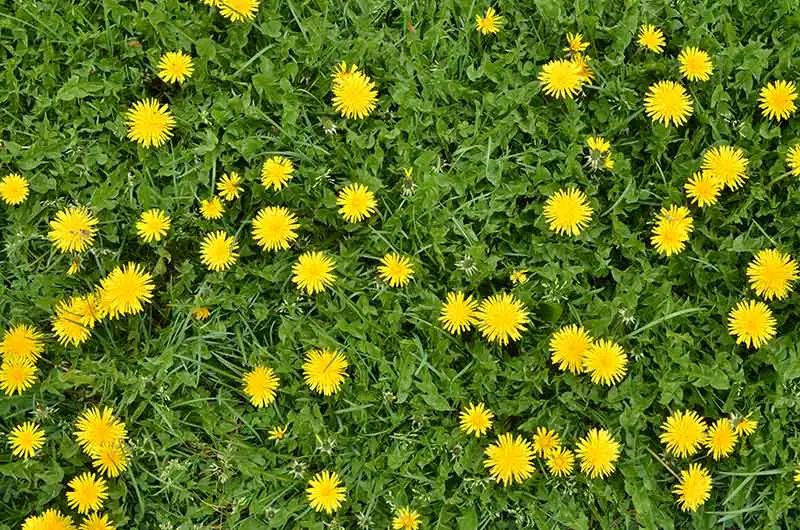
How to Get Rid of Dandelions
There are several methods you can use to get rid of dandelions, including manual removal by hand or weed puller, or with the use of a natural or chemical herbicide.
We have provided guidance on both the natural and chemical methods of dandelion control.
How to Get Rid of Dandelions By Hand
Getting rid of dandelions by hand is the most effective method of removal, however, it is also the most laborious and time-consuming. You should carry this method out in the spring when the first dandelion seedlings begin to crop up.
1. Water Soil
Water the soil on the lawn or garden affected by dandelions about half an hour before you start the removal of the dandelion plants. Doing so helps to loosen the soil, making the removal of the plants and their deep roots much easier.
2. Dig Into Soil Along Taproot
Take a garden spade, weeding knife, or pitchfork. Making an incision along the length of the dandelion’s taproot, dig your tool deep into the soil. Once in the soil, wiggle the tool so as to loosen the plant’s taproot from the soil.
3. Pull Up Dandelion Plant
Grip the leaves of the dandelion plant firmly. Pull up on the plant with gentle force until you have pulled the taproot from the earth. If you feel a lot of resistance, repeat the second step by making more incisions along the taproot until you loosen the plant enough from the soil enough to pull it out.
4. Repeat On Remaining Dandelion Plants
Repeat the previous steps until you have removed all of the dandelions you can see.
5. Overseed Area
Reseed the treated lawn or garden with an appropriate grass seed for overseeding. Water any visible bare spots.
Note: While digging by hand is an effective way to get rid of dandelions, you must remove the entire taproot to kill the plants completely. As these roots run so deep, you will likely have to repeat this method several times to get rid of every dandelion.
How to Get Rid of Dandelions With a Weed Puller
Another manual method of dandelion control is to pull the plants up using a weed puller. These tools are specifically designed to ease the process of manual weed removal, speeding up the job and making it much less laborious than pulling up the dandelions by hand.
1. Water Soil
Water the soil around 30 minutes before attempting to remove the dandelion plants. This will loosen the soil and ease the process of removing the dandelion and its taproot.
2. Place Tool Over Dandelion Plant
Position the claws of the weed puller over the head of the first dandelion plant. Place your foot onto the tool’s foot platform and push down on it to drive it into the soil. Allow the claws to close around the dandelion and its taproot. Pull up on the tool to pull the plant from the soil.
3. Repeat on Remaining Dandelion Plants
Repeat the previous steps until you have got rid of every dandelion.
4. Overseed Area
Overseed bare patches left on the lawn after you have removed all of the dandelions. There isn’t any need to fill in the holes left behind by the weed puller, as the surrounding turf will quickly fill in these spots.
Note: Like the previous method of manual removal, it is likely that you may have to repeat this method several times before you rid your lawn of dandelions completely due to the plants’ long taproots.
How to Kill Dandelions with Natural Herbicide
Before you reach for the chemical herbicide, try using a more eco-friendly natural alternative. While natural herbicides work in the same way to kill dandelions as chemical herbicides do, they are made from all-natural organic materials and therefore pose much less of a threat to the local environment. When applied topically, natural herbicides work by destroying the leaves of the plant, which in turn kills the plant off.
1. Purchase or DIY Your Natural Herbicide Mixture
You can make a natural herbicide from a range of organic materials such as boiling water, vinegar, salt, or cornmeal. If you don’t have the time to DIY a mixture, you can purchase a commercially available natural herbicide; these are typically made from botanically-based oils, fatty-acid soaps, or acetic vinegar.
2. Spot Treat Each Dandelion
Apply the natural herbicide to each individual dandelion plant. Take care not to get the solution on any surrounding grass or plants.
3. Remove Dandelions
After the dandelions have withered and turned brown, manually remove the plants and their taproots. You may need to use a trowel to loosen the taproot from the soil if you feel any resistance.
Note: Natural herbicides are non-selective, meaning that they will affect every type of plant that you apply them to. For this reason, make sure that you treat each dandelion individually with the substance. Overapplication may inadvertently damage the surrounding grass or plants.
How to Kill Dandelions with Chemical Herbicide
Before applying the herbicide, read the label of your chosen product carefully for exact application and safety instructions. Also, make sure that the product won’t harm surrounding plants, particularly your grass.
1. Purchase Appropriate Herbicide
Purchase an appropriate herbicide, which should be a product described as a broadleaf herbicide. Take note that this type of herbicide will also get rid of any other broadleaf plants it’s applied to, including clover and chickweed.
2. Wait for a Dry Week
Wait for a week where the weather is forecast to be dry and sunny. This is crucial as rainy weather will wash away your product before it has had time to take effect.
3. Don’t Mow Area for 2 to 3 Days
Hold off from mowing the lawn over the 2 to 3 days leading up to your herbicide application. Your chosen herbicide will be more effective the bigger the dandelion leaves are.
4. Prepare Herbicide Mixture in Pump
Put on protective clothing and gardening gloves. Add your chosen herbicide to the tank of a pump sprayer and dilute it with water. Refer to the instructions on your product’s packaging to determine the exact ratio of herbicide to water.
5. Apply Herbicide Mixture to Dandelions
Take your pump sprayer and spray the herbicide over all of the dandelions you can see on your lawn or garden.
6. Wait Before Watering
Wait for a few days until the foliage of the dandelions has turned brown. After the dandelions have turned brown, water your lawn as normal.
7. Remove Dandelions and Overseed Area
Once they have completely died off, remove the dandelions. Do this by either raking the area or pulling up the plants by hand. Wait at least 3 days before mowing the area to allow the herbicide to penetrate to the plants’ roots.
Note: Chemical herbicides should only be used as a last resort for severe cases or when other methods of dandelion removal have failed. They can be extremely harmful to the local environment and wildlife, as well as to any pets or children in your household.
How to Prevent Dandelions
Mow Higher
The best method to prevent dandelions is to grow a lawn full of tall, dense grass. The taller blades help to prevent new dandelion seeds from making contact with the soil surface, preventing them from germinating and growing into mature plants. Raise the height on your lawn mower to mow the lawn at a height of at least three inches. As an extra tip, never take off more than ⅓ of the grass blades at a time to keep the grass in optimal condition.
Keep Grass Healthy
Having a lawn full of thick grass helps to choke out dandelion growth. The density of the grass gives the lawn a better chance of outcompeting the dandelion seeds that manage to germinate. Keep up with sufficient watering and lawn fertilization practices to encourage the growth of strong, dense grass plants. Your annual fertilization schedule should involve 4 fertilization throughout the growing season. Consider overseeding your weedy lawn as method of natural weed control.
Use a Pre-Emergent Dandelion Control Product
You can apply pre-emergent dandelion control products to prevent dandelions from growing the following spring. Any products described as pre-emergent contain a chemical that prevents seeds from germinating. Therefore, pre-emergent dandelion control products and are ineffective once the seeds have begun germination. For this reason, you must apply any pre-emergent dandelion control products in the late winter in order for it to take effect the next spring.

